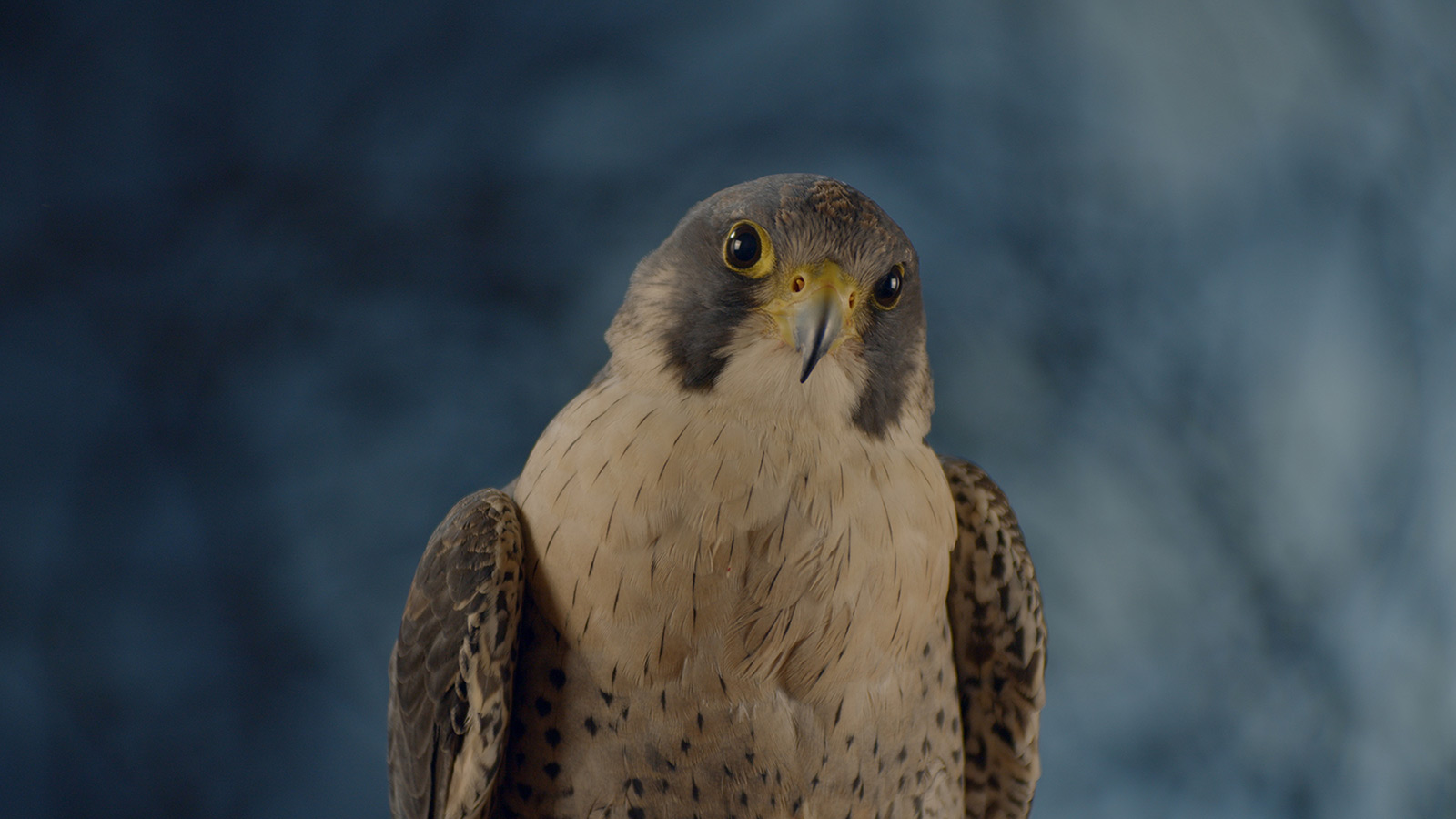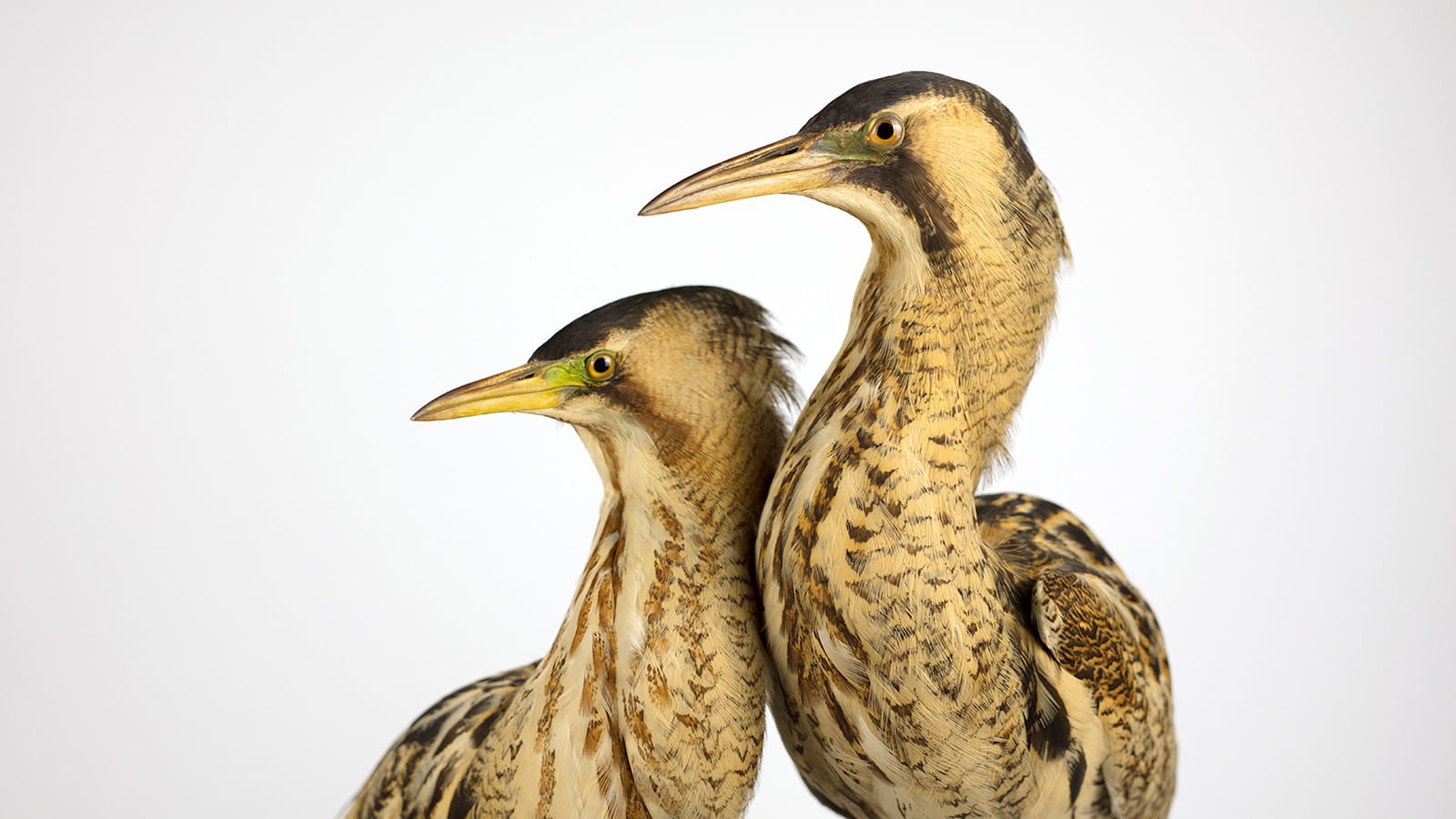Looking/Seeing: On Daniel & Clara, The Watcher and the Bird

Now and then, the peregrine falcon looks right at us, its dark eyes, rimmed with yellow, meeting our own in an instance of mutual acknowledgement; but mostly, its head turns from side-to-side, with eyes fixed elsewhere in perhaps an effort to evade our gaze, which, nonetheless, confirms our presence. Of course, all this depends on a fiction - one into which we have inserted ourselves - since, actually, what the peregrine stares upon is the camera filming it. When I Look at You I See Myself is a seventeen-minute film by Daniel & Clara consisting of a single immobile continuous shot of a peregrine set against a variegated blue bokeh field. It belongs to a wider body of work by them, collectively titled Birding, that has been partly inspired by J. A. Baker's 1967 book The Peregrine. A selection of the artworks from Birding are currently being shown in the Albert Sloman Library alongside materials from Baker's archive as an exhibition called The Watcher and the Bird.

The film serves as a portrait of sorts, as is suggested by their decision to use a nineteenth-century style Petzval lens that was specifically designed with portraiture in mind, and quite deliberately recalls to mind some of Andy Warhol's experiments with film in the 1960s, such as his Screen Tests (1964-1966) in which the head and shoulders of hundreds of people were filmed with dispassionate intensity. Much of Daniel & Clara's work belongs to the genre of landscape, but portraiture - or more specifically self-portraiture - has been a consistent thread in their work. As the title hints, When I Look at You I See Myself is simultaneously portrait and self-portrait, with the self-portrait element happening indirectly rather than via overt depiction of one's own visage. Returning, though, to the issue of landscape and portraiture, it's worth remarking that these have occasionally functioned as interwoven genres, despite our tendency to perceive them as the basis for opposing orientations premised on the distinction between horizontal and vertical.
That interweaving was certainly absolutely important - crucial, even - for Early Romanticism in its German and English formations during the late eighteenth century: landscape was refracted through the subject's sensory perception of the landscape in Romanticism and can provide insight into the potentialities and limitations of perception, therefore also making conceivable a philosophical account of subjectivity (that underpinning structure which determines the possibility of selfhood, of what we mean by "I"). There's a rich philosophic history here in which Immanuel Kant has an initial starring role and that is exemplified, within art, by Casper David Friedrich's incredible landscape paintings. In many of them, we view a figure, or a group, turned away from us, viewing an immense and sublime landscape. As such, Friedrich invites us to view those depicted people in the act of viewing as well as what they view - an endeavour which comprises an adjustment of the notion of "seeing myself seeing myself" that defines self-reflection. Portraiture, for Friedrich, is not about how a person visually appears or is, but rather is an examination into what constitutes personhood.
In 2021, Daniel & Clara produced a series of 100 short videos titled On the Island, that were exhibited in Art Exchange. Each one shows them silently observing the landscape of Mersea Island, even if it was not immediately evident what they were looking at or why it was significant. Upon watching them, it struck me at the time that these were effectively a translation of Friedrich's practice, meaning that Daniel & Clara's work was revisiting Early Romanticism and its themes. That remains broadly accurate to my mind, though it does so under the proviso that I now comprehend more fully the imbrication of them and landscape as involving a reflexive undertaking on their part, a recognition that their perspective upon the world necessitates an investigation into their own positionality in a manner akin to how some researchers must, as a preliminary step, comport their research towards themselves before looking outwards.

Such self-reflexivity hardly needs to be abstractly theoretical. In fact, it can be rooted in our everyday acts of vision; seeing conjoins with knowing, and then can refer back to an exploration of how we know/see what we know/see. When I Look at You I See Myself, in its very title, highlights visual perception and it's certainly possible to imagine a strong interpretation of the title in which "seeing myself" is only possible through "looking at another" (that idea also has a substantial and diverse philosophical history). The intertwining of self and other is likewise manifest in a couple of large lenticular pieces also hailing from the Birding project but not on display in the Albert Sloman Library. In these, depending on where we stand, the photographic images switches between portrait of a bird and portrait of two twitchers - Daniel & Clara themselves - watching through binoculars. The binoculars highlights and thematises the act of looking as such. And the correspondence of bird and watcher is further betokened by the possibility of our seeing a "cross-fade" whereby images of the bird and Daniel & Clara appear simultaneously, overlapping one another. We, as beholders, determine the image itself and become conscious of what our beholding entails and how it comes about.
Birdwatching is a particularly intense form of observation, requiring patience, optimism, planning, and knowledge. For the myopic J. A. Baker, birdwatching must have been both self-willed labour and escape. If The Peregrine converts vision into prose, then the latter is a reflection of, and utterly conjoint with, the former. Such conversion also occurs in Daniel & Clara's twelve Green Letters in which they relate their own experiences of birdwatching, accompanying those letters with small photographs and sometimes drawings; these are also on display. Perhaps immodestly, I won't say anything more about these - other than to exhort you to visit and read each letter for yourself - since I have written about them in Daniel & Clara's upcoming book, Birding.
I want to end by mentioning that Baker himself appears twice in a Daniel & Clara diptych: the two nearly identical photographs differ by the inclusion or removal of Baker's glasses; we are thus invited to play Spot-the-Difference and engage our own labour of seeing. And in that labour we see, if only momentarily, what it is to see. Or put differently: in looking at Daniel & Clara's work, we glimpse ourselves.
